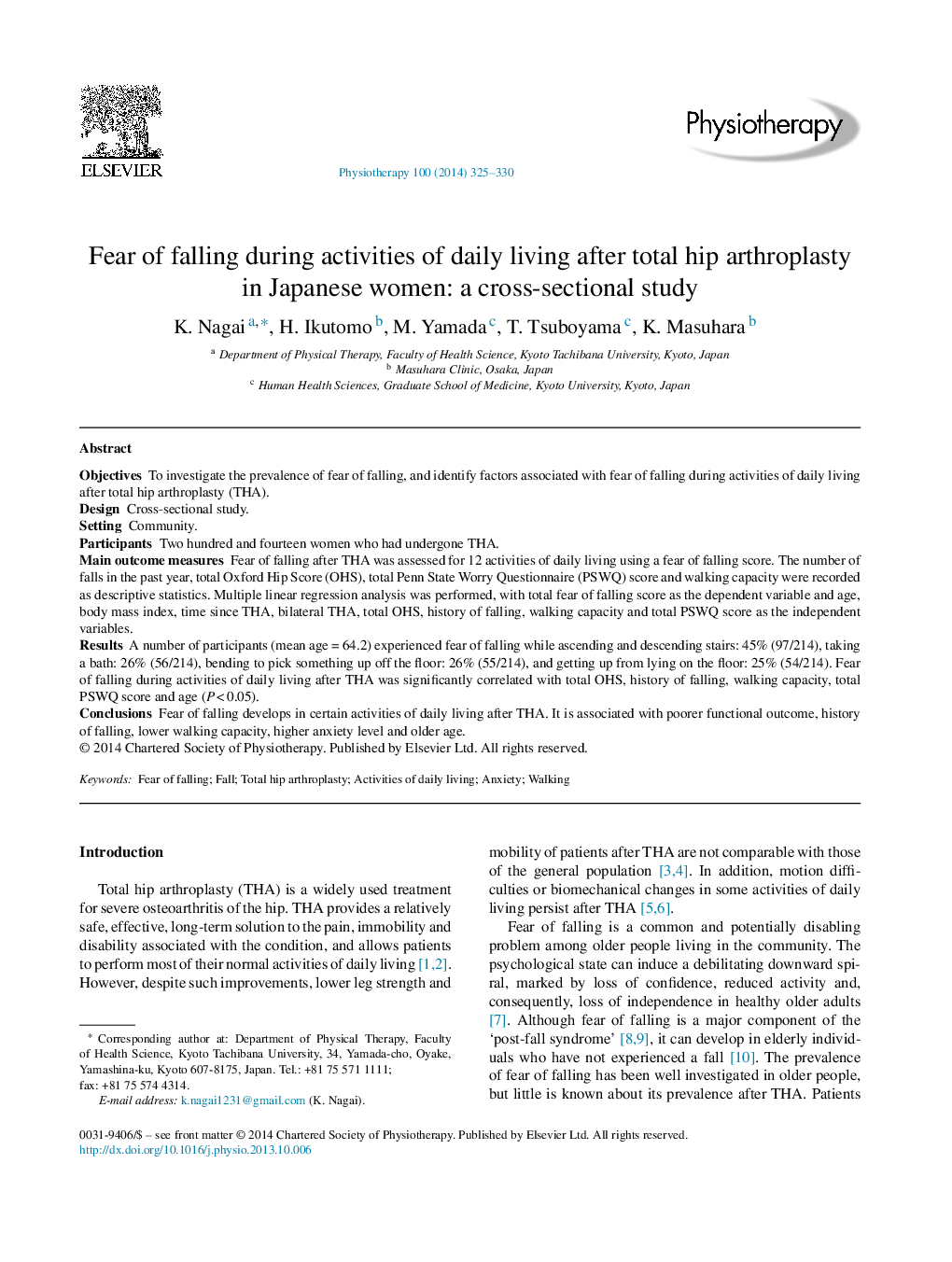| Article ID | Journal | Published Year | Pages | File Type |
|---|---|---|---|---|
| 2627745 | Physiotherapy | 2014 | 6 Pages |
ObjectivesTo investigate the prevalence of fear of falling, and identify factors associated with fear of falling during activities of daily living after total hip arthroplasty (THA).DesignCross-sectional study.SettingCommunity.ParticipantsTwo hundred and fourteen women who had undergone THA.Main outcome measuresFear of falling after THA was assessed for 12 activities of daily living using a fear of falling score. The number of falls in the past year, total Oxford Hip Score (OHS), total Penn State Worry Questionnaire (PSWQ) score and walking capacity were recorded as descriptive statistics. Multiple linear regression analysis was performed, with total fear of falling score as the dependent variable and age, body mass index, time since THA, bilateral THA, total OHS, history of falling, walking capacity and total PSWQ score as the independent variables.ResultsA number of participants (mean age = 64.2) experienced fear of falling while ascending and descending stairs: 45% (97/214), taking a bath: 26% (56/214), bending to pick something up off the floor: 26% (55/214), and getting up from lying on the floor: 25% (54/214). Fear of falling during activities of daily living after THA was significantly correlated with total OHS, history of falling, walking capacity, total PSWQ score and age (P < 0.05).ConclusionsFear of falling develops in certain activities of daily living after THA. It is associated with poorer functional outcome, history of falling, lower walking capacity, higher anxiety level and older age.
